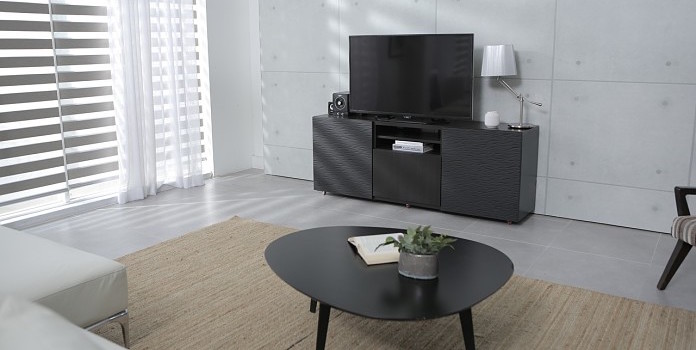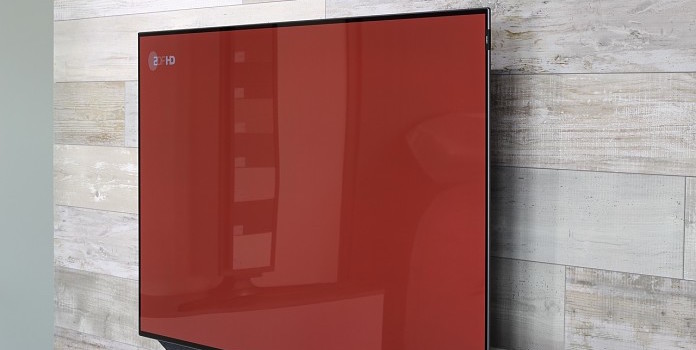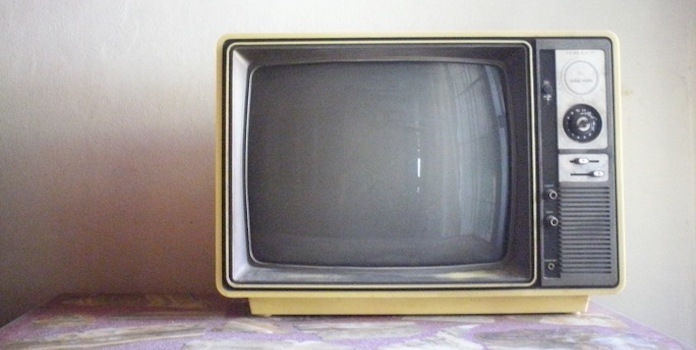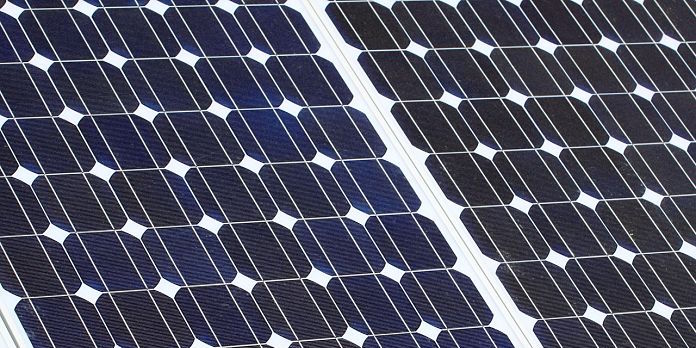How Many Watts Does a TV Use? You Might Be Surprised

If energy efficiency is your focus, we’ll show you how many watts a TV uses.
How many watts does a TV use? With today’s high-efficiency models, the answer is surprisingly low (though of course, it depends on your TV). Take a look below for the answer, as well as tips on how to find your own TV’s wattage, and how many solar panels it would take to power your TV throughout the year.
How many watts does a TV use?
Televisions range from just 20 watts for small sets to 200-400 watts for the big boys. How much electricity TVs use varies by type, manufacturer, and size. Older CRT TVs (the big boxy ones from the ’90s) use about 2x the amount of electricity as newer, more efficient LED and LCD TVs.
Here’s a quick rundown of electricity usage for a medium-sized TV, averaged from a myriad of sources across the internet:
- 32” LED: 30 – 55 watts
- 32” LCD: 50 – 70 watts
- 32” OLED: around 60 watts
- 32” CRT: around 120 watts
Obviously, your TV’s wattage may be different from the above, but it gives you an idea of what to expect. Yes, there is a range for all of them – some brands and models use more than others. One TV’s energy consumption could be much higher than another, but we’re talking about less than 100 watts of power for almost all of them.
And 100 watts really isn’t a lot of power. Let’s gain some perspective by quickly discussing light bulbs: Remember back before LEDs and CFLs, when we all used those 90-watt, incandescent bulbs throughout the house? Well, just one of those light bulbs used more energy than your entire LED TV uses! In regards to electricity consumption, these new TVs are pretty incredible.
Obviously, as screens get larger TVs use more energy. According to one product review site, a 32” LED TV uses about 18 watts of energy. Moving up to a 40” LED increases that energy use to 31 watts – not a huge difference. But a 55” LED TV uses about 57 watts or 2x the amount of electricity as a 32” TV (though still very little electricity).
All this is to say, even with the bigger models, the average LED or LCD TV probably uses between 30 and 100 watts of electricity.
How to find your TV’s actual wattage
You might be wondering about the wattage of your own TV. How do you know what it is? It’s actually pretty easy.
All you need to do is look at the label on the back and it will tell you. Just to experiment, I pulled my own 32” LCD TV back from the wall and found it uses 65 watts of electricity – pretty much in line with the averages above for this size.
If your TV doesn’t have its wattage listed, you can always buy an electricity usage monitor that plugs in between your gadget and the wall and monitors how much electricity it uses. The Kill A Watt is a popular, low-cost option. Check your local library though before you buy! Colorado’s Denver Public Library loans out usage monitors, so maybe yours does as well.
Is my TV’s wattage important?
As we mentioned, your TV doesn’t use that much energy. If you’re focused on energy efficiency, it is far better to focus on the bad boys of energy use: Your air conditioner is an energy hog, so button up your home by adding insulation to crawl spaces and ceilings and add weatherstripping around doors and windows. This is the single biggest step you can take to increase your energy efficiency.
In regards to energy efficiency, keep in mind that there are bigger fish to fry than your TV!
Now let’s really drive this point home:
Say you have a 40” LED TV that needs 70 watts to run. The average US household watches 5 hours of TV every day (yes, that much!) and let’s just say you’re average as well. When we add up all the energy used by your TV watching, we find you use 350 watt-hours a day (70 watts X 5 hours), or 10.5 kilowatt-hours each month (1,000 watt-hour = 1 kilowatt-hour).
With the average US household using about 900 kWh a month, this means your TV watching accounts for about 1.2% of your total electricity use!
Not too much, is it? Now consider this: Heating and cooling account for 48% of the average US energy bill! Now you know why focusing on insulation, weatherstripping, and other measures that keep cold air in (or out) are so important!
How can I decrease my TV’s energy consumption?
If you’re an energy efficiency warrior and want to decrease your energy use to the bare minimum, good for you! Here are a few tips to help you lower your TV’s energy use:
- First things first, stop watching 5 hours of TV every day! You know you’ve already seen that Friends rerun, no need to watch it again. Go take a walk or read a book. Save money and get smarter.
- Many electronics use small amounts of electricity even in stand-by mode. If you’ve got an awesome entertainment setup complete with TV, DVD player, and sound system, they all could be draining your pocket even when you’re not using them (this is known as “vampire load” – scary). To curb your vampire load, buy a surge protector with an on-off switch so you can turn off all those devices at once, ensuring there’s no wasted energy.
- If you’re in the market for a new TV, be sure to look out for Energy Star models. Energy Star is a federal organization that promotes energy efficiency, including labeling high-efficiency electronics so you, the consumer, know which ones are best for the environment and your wallet.
How many solar panels are needed to cover my TV watching?
We’ve talked a lot about efficiency, but we are a solar site, so let’s end this with some fun solar facts.
We’ve already found that an average 40” LED TV uses about 10.5 kilowatts each month, or 126 kWh a year. If you’re going solar, how many solar panels would you then need to cover that electricity? Let’s find out!
Obviously, a solar panel in sunny Arizona will produce more electricity than the same panel in Alaska, so let’s compare a few different areas:
- Phoenix, AZ: 1/3 of a standard solar panel (260 watts)
- Anchorage, AK: 2/3 of a solar panel
- Albany, New York: 2/5 of a panel
In all cases, you don’t even need a full panel to cover your TV’s electricity needs. With the average residential solar installations (pg 14) clocking in around 5.5 kW or 22 panels, it just goes to show again that your TV just doesn’t account for much energy use!
So if you’ve got an old CRT TV or a huge entertainment system, there’s probably some room to cut the fat by upgrading to a newer TV or using a surge protector. In the end, though, your TV uses so little energy that you can rest easy and not worry.
Now the real problem is just how much TV we’re all watching! 5 hours a day? Come on America, let’s get outside a little more.




